McGill is a research-intensive university credited with many scientific discoveries and other inventions. However, there are certain research projects that went horribly wrong and the university tends to downplay them. One of the most devastating discoveries ever made occurred in McGill University’s MacDonald Physics Building, which is now said to be cursed.
Welcome to the ninth installment of the Haunted Montreal Blog! Released on the 13th of every month, the January edition focuses our research we are carrying out into the Haunted Trafalgar Tower Site.
Haunted Research
For over a century, the mysterious Trafalgar Tower looked down on the city from a height. Perched on a steep slope, it was located in the valley between Mount Royal and the peak of Westmount. Gothic in style and hexagonal in shape, the little stone tower was commissioned by fur trader John Ogilvy, who had purchased a large swath of land in 1805, which he named the Trafalgar Farm.
Not only was the area exceptionally beautiful, but the property also lay among the fields where General Amherst’s troops had camped in 1760 before taking Montreal from the French. John Ogilvy, ever the British loyalist, appreciated the historic location.
In fact, to celebrate the anniversary of the Battle of Trafalgar, where British Admiral Horatio Nelson won a decisive victory over the French, Ogilvy fired a small cannon from the top of the Trafalgar Tower every October 21st in remembrance.
The Trafalgar Tower was built by James Gillespie, John Ogilvy’s protégé. Gillespie was well-suited for the job because he had been present at the battle of Trafalgar and served on Nelson’s flagship, the “Victory”. The chosen Gothic style, with pointed arches and a handsome design, blended in well with the leafy countryside. A common feature in the gardens of the wealthy, such towers were described as a “follies” for rich people and were used as summer houses to entertain guests and host enchanted gatherings. Romantic in character and shrouded in mystery, the Trafalgar Tower was intended to be an architectural showpiece highlighting John Ogilvy’s fervent British loyalty, financial success and excellent taste.
However, following Ogilvy’s death in 1819, the tower slowly began to crumble and develop a creepy reputation. Rumours circulated that the Trafalgar Tower was haunted, especially because many visitors claimed to have heard phantom footsteps in the vicinity. It wasn’t long before other disturbing stories emerged.
A common legend referred to a strange old hermit who used to live in the forlorn tower and speculated that it was he who haunted it.
In another story, the local toll-gate keeper, an old man name Quinn, had the fright of his life one moonlit night. One of his cows had strayed away from the toll-booth and wandered towards the Trafalgar Tower, prompting the owner to go retrieve the animal in the beautiful moonlight. Quinn had heard about the haunting from several people, but he thought it was a joke and had no fear. According to Quinn:
“I had just found my cow at the foot of the haunted summer-house and saw, with my two eyes, a beautiful form of a woman looking out of one of the windows. I was transfixed to the spot and could not take my eyes off the vision. She was in white with her hands clasped, as if in prayer, looking upwards. I remember falling down on my knees and crossing myself, and I remember nothing more.”
One of the most deranged tales about the Trafalgar Tower suggested it was haunted by a pair of young lovers who had been murdered on the site by a jealous suitor. After being rejected by the young lady, the suitor was said to have hacked them apart with an axe. One anonymous young man recounted meeting the rejected suitor, whom he described as “a fierce looking man sharpening a bloodstained axe.” The murderous suitor then “poured out his fearful story” and proceeded to show the terrified listener a locket he claimed had belonged to his “fiancée”.
In 1836, the Trafalgar property was bought by one Albert Furniss, who remodeled the crumbling tower. He also reserved a small piece of the land for himself on Côte-des-Neiges Road and sold the rest of it in 1845 to Frederick B. Matthews, including the farm and cottage. Matthews was a businessman who recognized the need for a new Protestant cemetery, largely because the Old Protestant Burial Ground was almost full. He felt that the Trafalgar site, nestled in a lush valley between two peaks, was ideal for its beauty and location.
In 1846, the Trafalgar Mount Cemetery Company was founded on 16 acres of John Ogilvy’s old farm. It was overseen by a prominent Board of Directors, including John Young, Luther Holton, William Workman, William Lyman and Jacob DeWitt. John Ogilvy’s old house, the “Trafalgar Cottage”, was occupied by Frederick B. Matthews, the cemetery’s owner and superintendent, along with his gardener. The Trafalgar Mount Cemetery Company began an advertising campaign to highlight the famous tower as a way to sell lots for burial:
“The extreme natural beauty of the situation, the vast, picturesque and diversified views it affords. the present advanced artificial improvement of the grounds, with clumps of flowers, natural terraces, and winding path to the TRAFALGAR TOWER peering from the summit of the MOUNT clothed with luxurious arbors – contribute to render this spot peculiarly adapted to the purposes of a CEMETERY, the existence of which will be at once a source of attraction, usefulness and celebrity to the Metropolis of Canada.”
The first and possibly only burial in Trafalgar Mount Cemetery was that of a New York civil engineer named W.R. Casey. He died on Saturday, August 8, 1846.
A railroad engineer, W.R. Casey was in Montreal to plan the city’s first railway, a link between the city and Lachine. Casey had contracted tuberculosis so he moved from the overcrowded city to the leafy countryside, where the air was clean, with his sister serving as his nurse. At first, he chose to stay at Sword’s Hotel on Mount Royal’s western slope. However, as death approached, he requested to be moved to the nearby Trafalgar Cottage, which he apparently felt was more comfortable. His sister contacted the owner, superintendent Frederick Matthews, and was surprised to learn that the land had recently been converted into a cemetery. Matthews allowed the dying Casey to stay in the cottage until his death, when he was buried at “a beautiful site, at the ascent to the Trafalgar Tower, shaded by a grove of young trees.”
Whether or not Casey was the only burial is a matter of speculation. One source suggests up to eight more bodies may have been buried in the fledgling Mount Trafalgar Cemetery, however, it wasn’t long before the enterprise folded after Protestant officials decided on an alternate burial location. Just to the east of the Catholic Notre-Dame-des-Neiges Cemetery, the Mount Royal Cemetery was opened in 1852.
While nobody knows the exact location of Casey’s grave, there are rumours that today local residents sometimes dig up human bones in their gardens.
In 1848, Furniss built a grand Tudor-style summer residence on the piece of land he had reserved for himself on Côte des Neiges Road. Keeping with the tradition set up by John Ogilvy, he named his new home “Trafalgar”.
Other institutions that adopted the famous name included the Trafalgar School for Girls (1887) and the luxurious Trafalgar Apartments (1931).
The mysterious phantom footsteps in the vicinity of the old Trafalgar Tower are perhaps one of the most well-documented hauntings in Montreal. While first documented by John Ogilvy, many other prominent Montreal citizens would go on to report hearing the strange disembodied footfalls.
Around 1880, John William Molson recalled that the Trafalgar Tower was used as a summer-house and lookout for visitors and that his mother had spent many happy hours there. He noted that both she and Albert Furniss had repeatedly mentioned the phantom footsteps.
On a wintry morning in 1890, a worthy citizen of Montreal visited the Trafalgar Tower with his wife and young son in tow. As he hoisted himself to peer through the Gothic window and examine the tower’s interior, he heard footsteps approaching. His wife heard them as well and urged him come down to avoid getting into trouble for trespassing. The man, still looking inside the tower, listened as the footsteps approached until they stopped right behind him. He spun around to confront the intruder, but there was nobody there. The couple were baffled by the fact that there were not any footprints in the crisp, white snow.
During another similar incident in 1925, a curious archivist named Dr. Massicotte, along with others, claimed to have heard the mysterious footsteps at the site of the tower. Again, no footprints appeared in the snow.
One theory about the mysterious footsteps relates to the geography surrounding the tower. Given that the Trafalgar Tower was located on a perch in a valley, some people speculate that the phantom footsteps are nothing more than the echoes of people walking around. Indeed, long-held rumors suggested that John Ogilvy had experimented with exaggerated footsteps in order to produce an echo when strolling near the tower. Apparently it eventually became John Ogilvy’s custom to approach the tower by stomping about in this manner, and after a pause, he would return home.
Whatever the case, for well over a century the Trafalgar Tower frightened and intrigued Montrealers until it finally began to crumble and ultimately collapse. The last memory of the tower’s existence is from 1937, when a student from the nearby Trafalgar School snapped some photographs of its dilapidated remnants. Thus ruined, the once infamous haunted tower began to fade from the collective memory of Montreal’s citizens. It wouldn’t take long before its exact location was forgotten.
Perhaps the best evidence comes from a 1946 letter, when Trafalgar School teacher Miss Martha Brown wrote: “I am afraid there is nothing left of the Tower. In 1937 one of the pupils took a snapshot of what remained. It is difficult to explain just where the Tower stood, though I visited it, with schoolgirls, many times, years ago. As you pass from Côte-des-Neiges along the Boulevard, Belvedere Ave. is on the right, and the Tower used to be easily seen on the elevation just above the Boulevard.”
Today, the 1848 Trafalgar House still stands on Côte-des-Neiges Road, but there is no evidence of where the tower once stood. There is much speculation that it was probably located in what is now a citizen’s back yard, on the escarpment somewhere above The Boulevard. As for the mysterious ghostly footsteps, local residents can still report hearing them sometimes.
According to one teenage girl who has lived most of her life on Belvedere Road, “The weird sound of footsteps is pretty normal in our neighborhood. You can usually hear the invisible feet walking when it is very quiet and when you are alone, like in the early morning or after sunset. I have heard them many times.” When asked her theory about the mystery, the girl explained: “I don’t know. For as long as anyone can remember, we have heard these unusual sounds around the area.”
Whether the mysterious phantom footsteps are merely the result of an echo, or something more sinister, has always been a hot topic in the neighborhood. If it is a spirit causing the sounds, nobody is certain as to the identity of the phantom or the reason it haunts the site of the old tower. While some residents believe the ghost is probably John Ogilvie or W.R. Casey, others believe it is related to General Amherst’s infamous march that led to the capitulation of Montreal, a sort of paranormal reminder of the military boots on the ground.
Whatever the case, the name “Trafalgar”, which John Ogilvie was so enamored with, still adorns much of the neighborhood. Despite the disappearance of the infamous Trafalgar Tower, Ogilvie would have been satisfied that the famous British name still appears as a street, in the home built by Albert Furniss, in a private school and even a local luxury apartment complex.
Whether is area is actually haunted or not, and if so, by what, is perhaps one of Montreal’s most enduring legends.
Company News
Haunted Montreal’s 2015 public season of ghost walks is now over, but private bookings for groups of 10+ are still available for all of our tours. For more information or to see which times and dates are available, please contact info@hauntedmontreal.com.
Over the next few months Haunted Montreal plans to expand for the 2016 season. Our goals are to reconfigure our website in order to improve it, to create a new box office system, to hire more actors and to have all of our tours available in both English and French. We plan to open our 2016 public season of ghost walks in May.
For clients who attended a ghost walk, we invite you to write a review on our Tripadvisor page, something that is very helpful for Haunted Montreal in promoting its tours.
For those reading the blog who want to stay updated and receive a new Montreal ghost story on the 13th of every month, please sign up to our mailing list.
Coming up on February 13: Eden Musée Site at the Monument-National
Montrealers were treated to the opening of a bizarre new museum in 1891. The Eden Musée featured waxworks of historical figures, reproduced crime scenes and other strange curiosities. Located in the basement of the Monument-National, a busy theatre, the museum featured Satan’s imps, an ossified man, mummies from Mexico, a skeleton of a “devil-child” born with feet and tail like a calf, a gorilla hauling away a woman and a replica opium den. Various murder scenes were also re-created and some of the society’s most notorious criminals were cast in wax. Eden Musée was closed in 1940 after it was deemed too tawdry by the St. Jean Baptiste Society, the owners of the building. Today, the Monument-National is run by the National Theatre School of Canada. An intimate theatrical studio sits in the basement where Eden Musée once flourished and according to staff and students, this part of the building is haunted. There are reports of pipes inexplicably banging and strange noises erupting in the basement studio. There are whispers amongst theatre students that the ghost haunting the site of the Eden Musée is none other than Sarah Berhardt, one of the greatest actresses of her era.
Donovan King is a historian, teacher and professional actor. As the founder of Haunted Montreal, he combines his skills to create the best possible Montreal ghost stories, in both writing and theatrical performance. King holds a DEC (Professional Theatre Acting, John Abbot College), BFA (Drama-in-Education, Concordia), B.Ed (History and English Teaching, McGill) and MFA (Theatre Studies, University of Calgary).

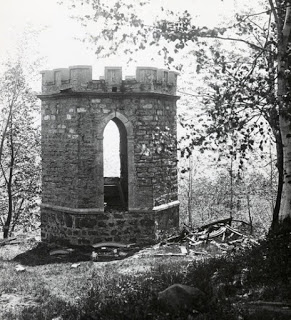

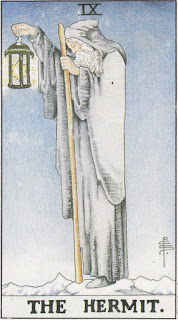
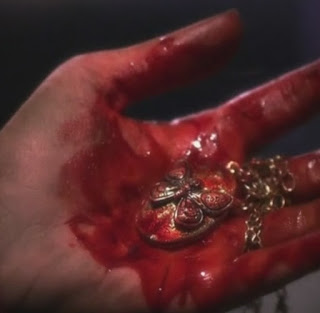

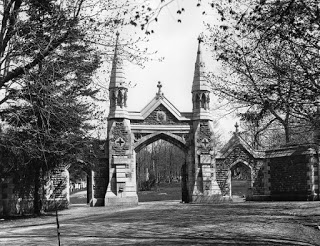
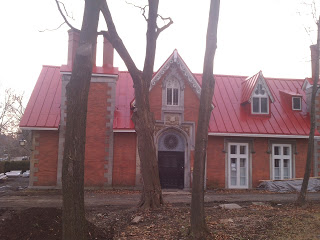
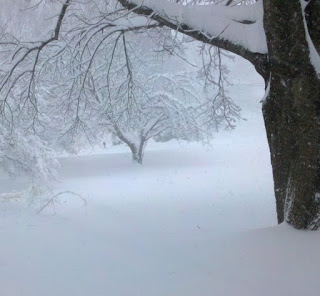

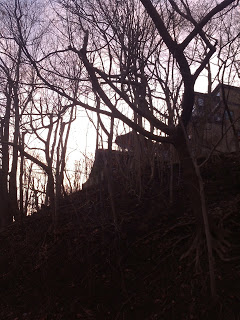

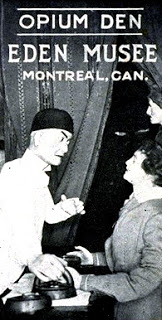

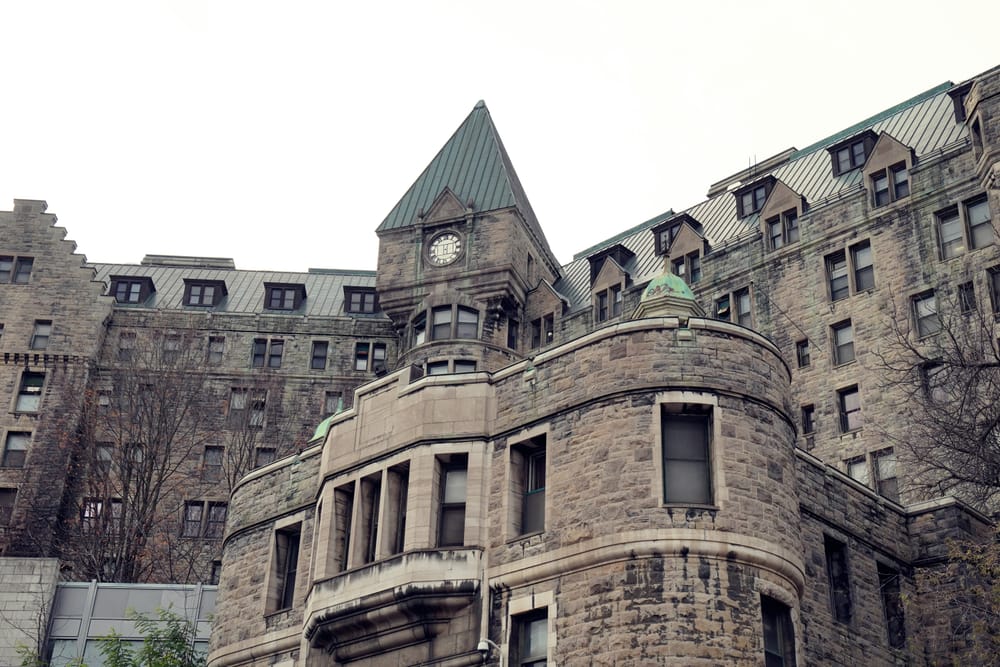
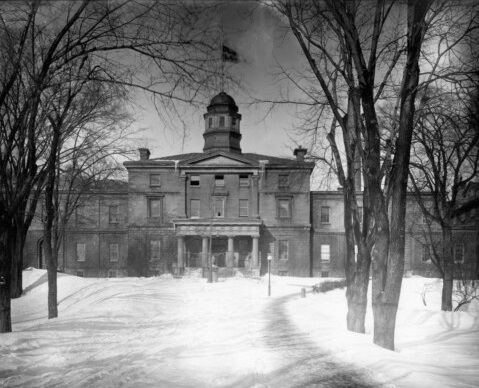
Bonjour, je viens de découvrir votre blog et j'aime beaucoup. La recherche que vous faites est vraiment impressionnante. Je me suis également intéressé à la légende de la Tour de Trafalgar dernièrement pour mon blog qui s'appelle Mystère et boule de gomme. Beaucoup d'informations se recoupent, mais je crois que ça pourrait vous intéresser. Voici le lien: http://mystereboulegomme.blogspot.ca/2016/04/une-tour-litterairement-hantee.html Continuez votre bon travail!
Merci pour le lien Ripley! Il est vraiment fascinant!